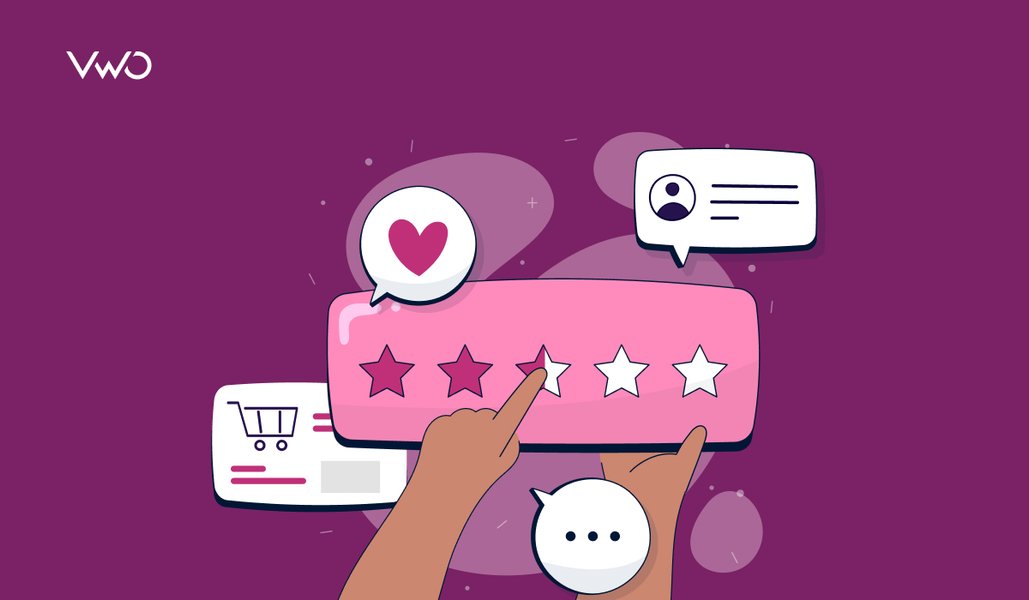Customer expectations are higher than ever, with brands like Netflix and Amazon setting the standard for seamless, personalized experiences. Today’s customers expect convenience and tailored interactions at every touchpoint, whether product recommendations or curated content.
In this blog, we’ll explore the essential customer experience stats demonstrating why getting CX right is so important. Whether you’re enhancing your strategy or proving the value of CX, these numbers will back it up.
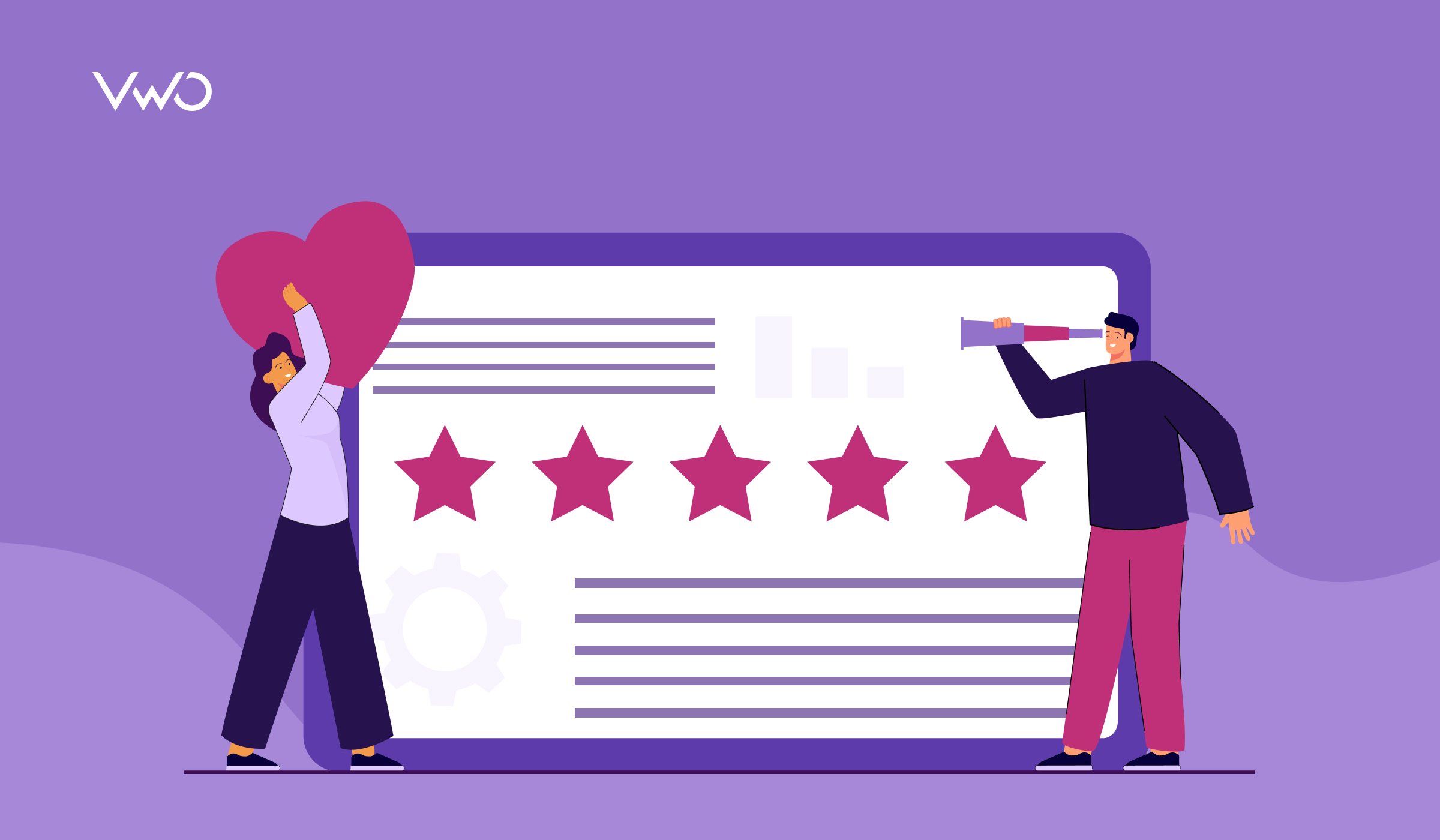
Positive customer experience statistics
Positive customer experiences boost customer loyalty, higher spending, and long-term profitability. Companies that focus on delivering exceptional experiences build stronger relationships and stand out in competitive markets.
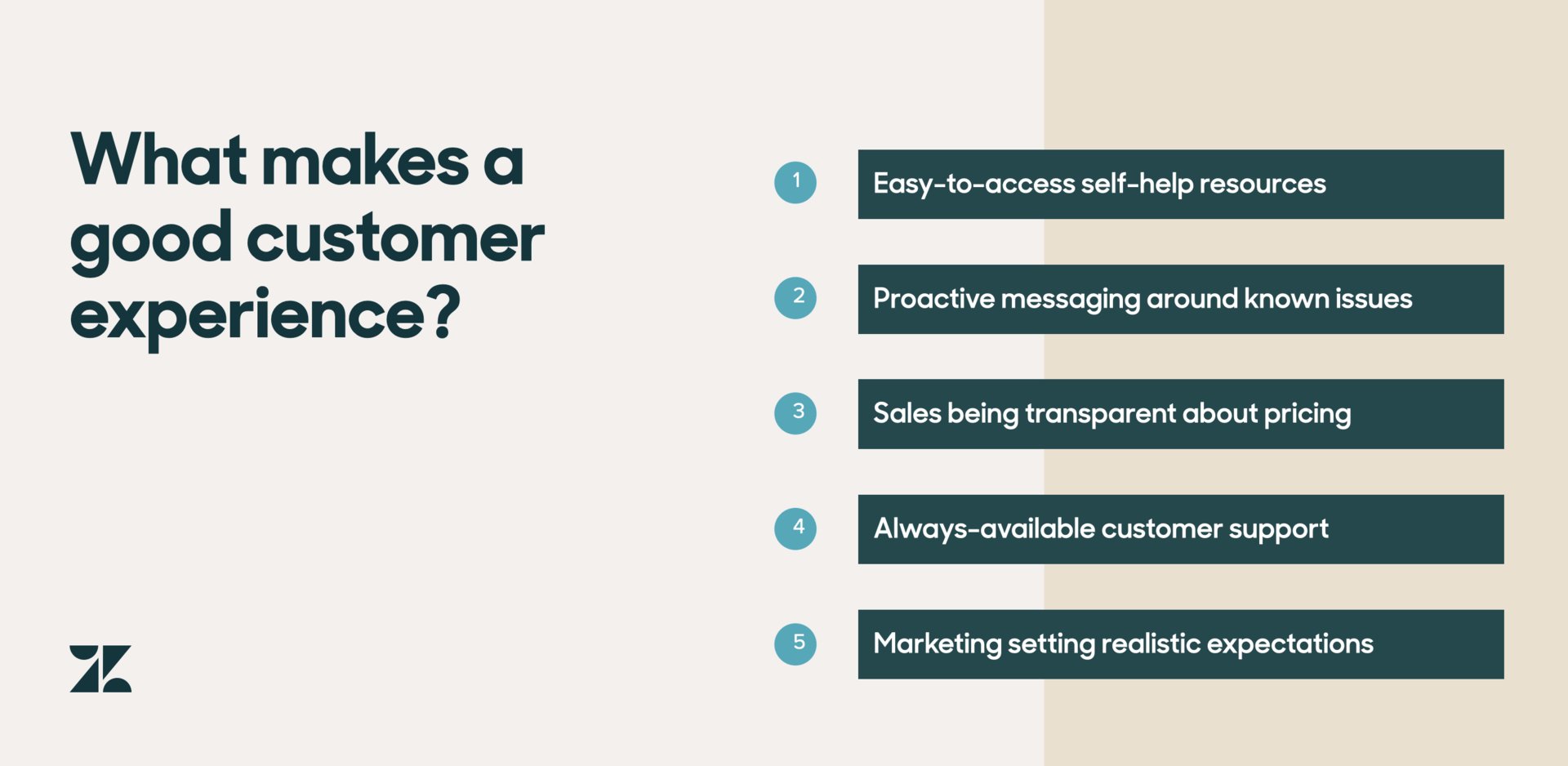
1. A positive experience with a brand is seen as more influential than good advertising by 65% of consumers.
(Source: edume)
While advertising grabs attention and drives initial interest, creating a positive customer experience fosters long-term loyalty and satisfaction. Advertising focuses on promoting products or services, whereas an extraordinary experience is about delivering value at every interaction, making customers feel understood and appreciated. This approach turns one-time buyers into repeat customers and brand advocates.
Example: Disney creates magical, positive customer experiences by focusing on every detail of their journey. Whether it’s a visit to a theme park or their Disney+ streaming service, they prioritize creating memorable experiences that result in solid customer loyalty and word-of-mouth recommendations.

2. According to 96% of customers, customer service plays a crucial role in maintaining their loyalty to a brand.
(Source: wisernotify)
Customer service is more than just resolving issues—it’s a critical touchpoint that shapes how customers feel about your brand. When done right, it fosters trust, strengthens relationships, and keeps customers returning.
To elevate your service, focus on quick response times, provide various support options (live chat, phone, email), and equip your team with the right tools and training. Personalized interactions and proactive problem-solving go a long way in creating a memorable service experience that keeps customers loyal and engaged.
3. Nearly 80% of American consumers view speed, convenience, knowledgeable help, and friendly service as critical components of a positive customer experience.
(Source: PwC)
To efficiently provide speed, convenience, knowledgeable help, and friendly service, businesses can implement AI-driven tools for quick responses, offer multiple flexible communication channels, and invest in thorough staff training to ensure accurate support. Emphasizing empathy and a customer-first mindset will foster a welcoming and positive experience, ensuring customer needs are met promptly and effectively.
4. On average, existing customers spend 67% more than new customers.
(Source: wisernotify)
Focusing on existing customers is more cost-effective than acquiring new ones, which requires significant marketing and sales efforts. By enhancing the overall experience for current customers through personalized service and consistent support, businesses can drive repeat purchases and loyalty.
Satisfied customers are more likely to spend more and recommend the brand, making their experience a priority for sustainable growth.
5. After having a positive experience, 77% of customers would recommend a brand, showing the strong connection between first impressions and loyalty.
(Source: wisernotify)
A great first experience encourages customers to become brand advocates. Feeling valued makes them more likely to recommend the brand to others. These highly trusted personal recommendations help brands grow organically through positive word-of-mouth.
Positive CX and average order value
(Source: wisernotify)
6. Buyers place a high value on excellent customer experience, with 86% willing to spend more, contributing to an increase in average order value (AOV)
A strong focus on positive customer experience (CX) directly impacts average order value (AOV). Customers are willing to spend more when they have a seamless, personalized experience, driving higher revenue per transaction. Prioritizing CX boosts overall profitability as satisfied customers engage more and purchase more.
7. Companies that utilize personalization can see up to a 15% rise in AOV and a reduction in service costs.
Personalization improves customer experience by offering tailored solutions and making customers feel understood and valued. This increases their likelihood to spend more, boosting average order value. At the same time, relevant recommendations reduce the need for extensive support, cutting service costs.
Statistics for poor customer experiences
Poor customer experiences can significantly impact businesses, leading to customer churn, lost revenue, and damaged reputations. When service is slow or unhelpful, customers quickly become frustrated and often switch to competitors, resulting in immediate and long-term revenue loss. A tarnished reputation can make it challenging to attract new customers, and negative word-of-mouth can harm a brand for years.
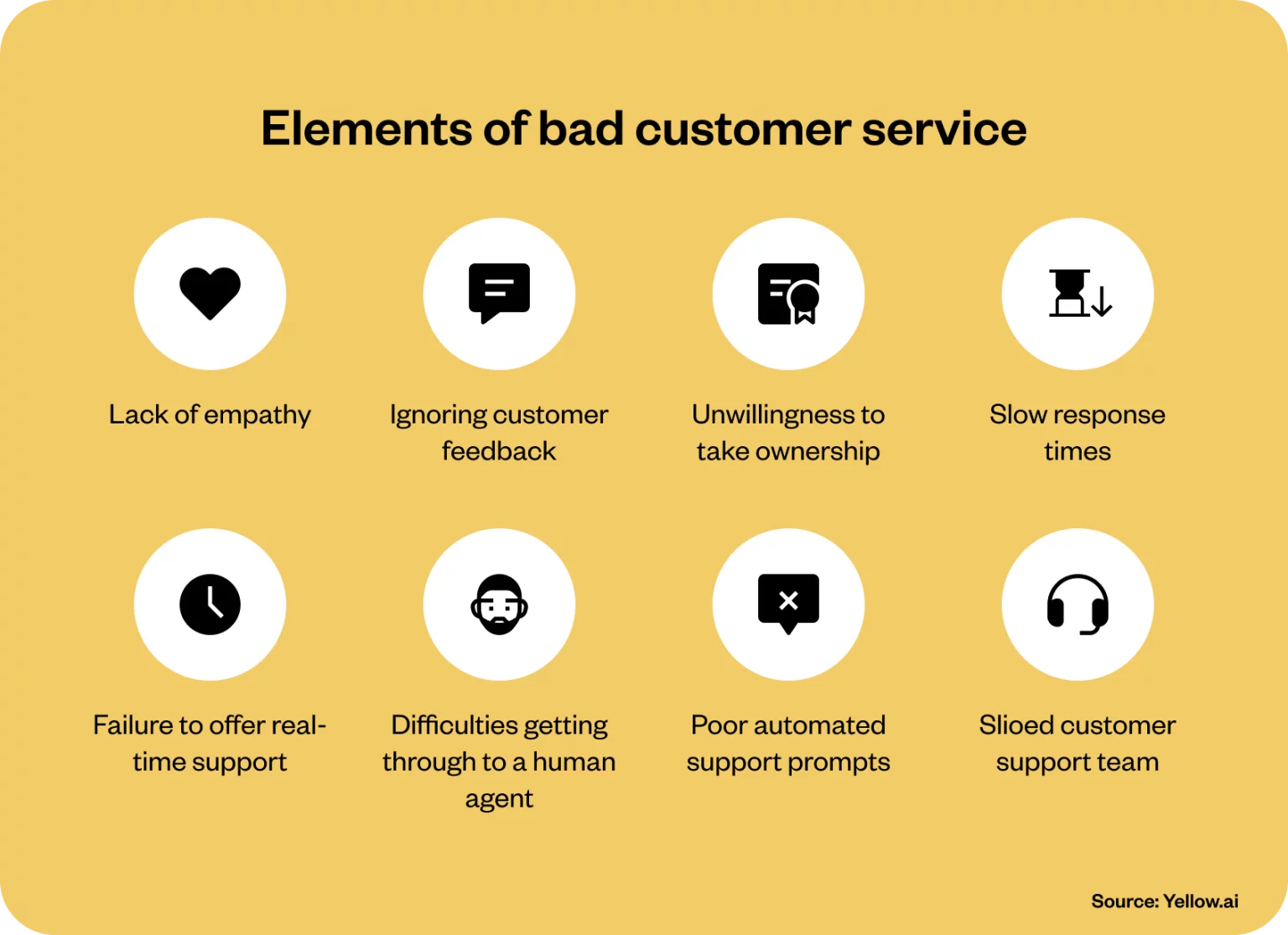
Additionally, poor customer service reduces lead conversions and increases operational costs, as businesses must work harder to win back lost customers and repair their image. Investing in customer experience improvements is crucial to avoid these costly outcomes, retain loyal customers, and maintain profitability.
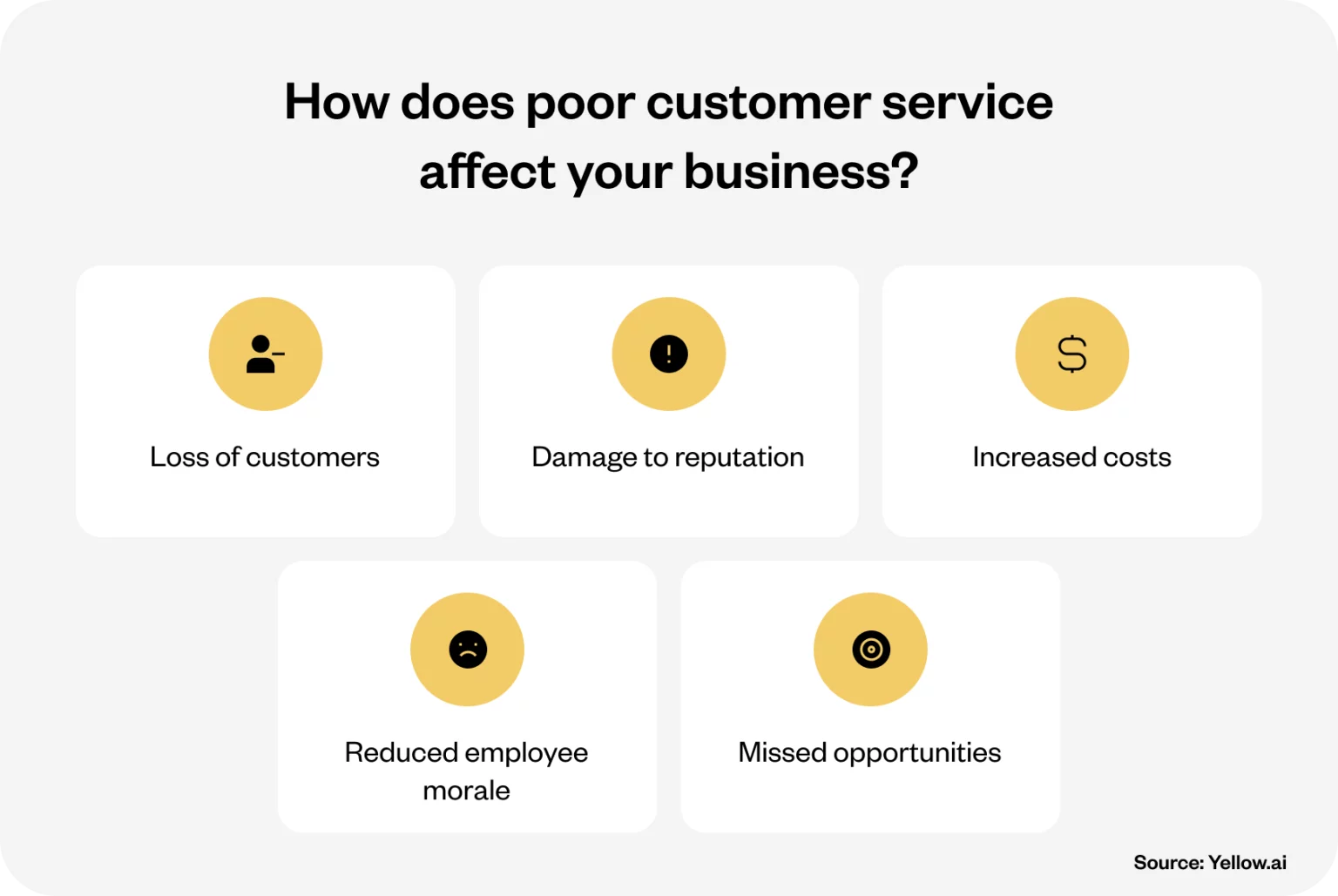
The following statistics highlight the significant impact of poor customer experiences on business performance:
8. In the past year, 52% of consumers have switched providers due to poor service, costing US brands an estimated $1.6 trillion.
(Source: edume)
9. After one bad experience, 1 in 3 customers will leave a brand they love, and 92% will abandon the company entirely after two or three negative interactions.
(Source: edume)
10. Negative interactions prompted 49% of loyal customers to leave a company in the past year, highlighting the significant impact of poor CX on profitability.
(Source: wisernotify)
Customer experience market statistics
The customer experience market continues multiplying as businesses recognize the value of prioritizing CX. Increased investment in CX technologies and solutions is helping companies differentiate themselves in a competitive landscape, driving customer loyalty and long-term growth.
11. The customer experience management market is expected to expand from $16.91 billion in 2023 to $52.54 billion by 2030, growing at a compound annual growth rate (CAGR) of 16.6%.
(Source: sprinklr)
The growing customer experience management market indicates a shift toward investing in tools such as AI-driven chatbots, personalized recommendation engines, data analytics platforms, and omnichannel support systems. These tools help businesses deliver faster, more personalized, seamless customer interactions. Strategies like A/B testing, real-time customer feedback collection, and predictive analytics can continuously improve customer journeys.
Companies prioritizing customer experience early and effectively will gain a competitive advantage, allowing them to differentiate themselves in a crowded market and retain customer loyalty.
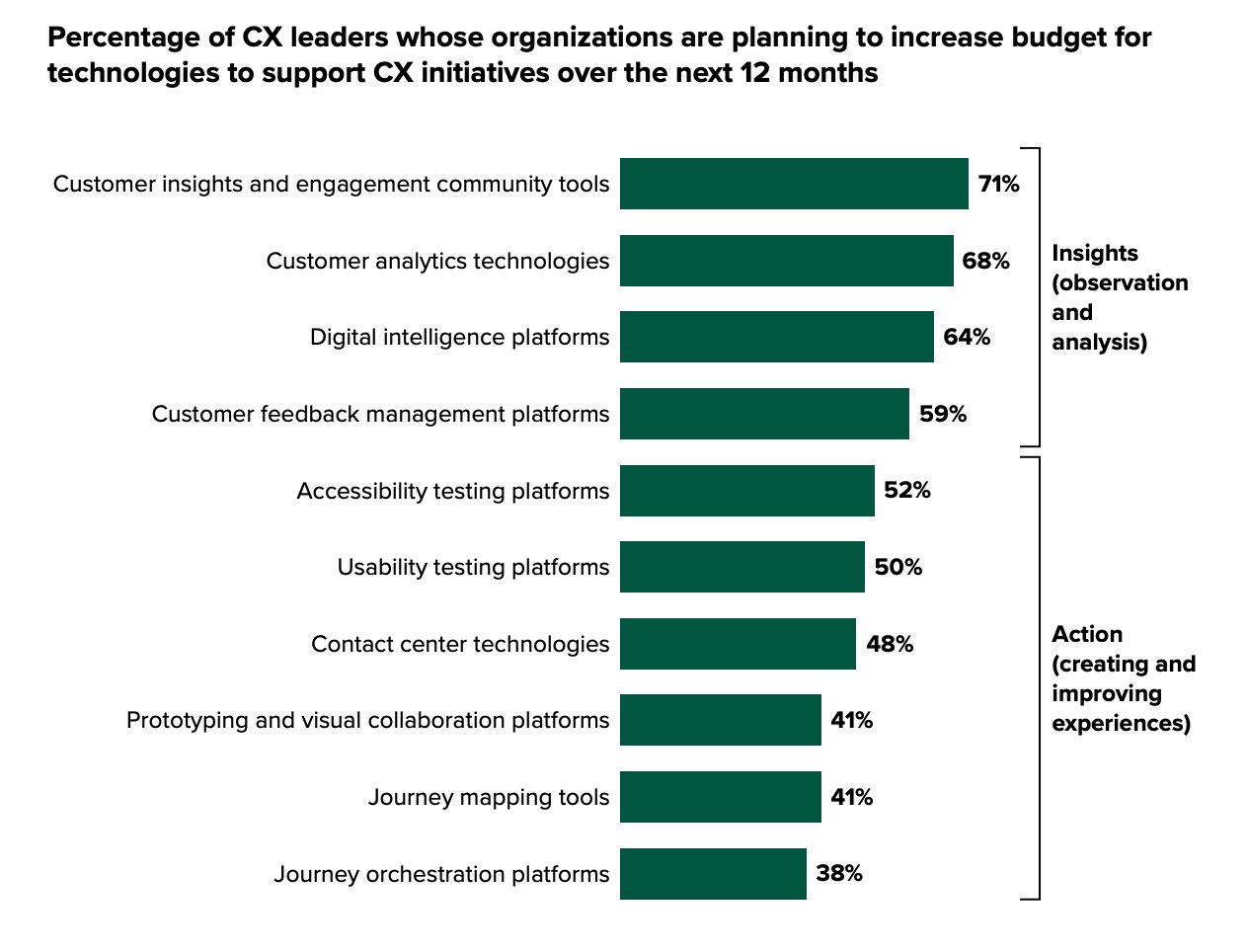
12. Globally, 44.5% of organizations recognize customer experience (CX) as their primary competitive differentiator.
(Source: Statista)
The shift toward customer experience (CX) as a primary competitive differentiator reflects the evolving market, where customers now value personalized interactions over just product quality or price. With products becoming easier to replicate, companies stand out by focusing on how they engage and deliver value.
To enhance CX, businesses can benchmark against competitors, listen to feedback, analyze performance metrics, and adopt proactive customer resolution strategies. This approach builds stronger customer loyalty and creates a competitive edge that is tough for competitors to match.
13. Companies that treat customer service as a value center rather than a cost center experience 3.5 times faster revenue growth.
(Source: emplifi)
A cost center minimizes expenses, while a value center drives customer satisfaction, retention, and long-term revenue. Treating customer service as a value center involves investing in meaningful interactions that boost returns.
Similarly, Conversion Rate Optimization (CRO) acts as a value center by improving user experience and driving conversions, directly contributing to revenue growth. By treating customer service and CRO as value centers, businesses can create a sustainable path to faster growth, ensuring every interaction adds measurable value to the customer journey and the bottom line.
Showpo, an online fashion retailer, partnered with VWO to improve customer experience through A/B testing. By adding a “Free Shipping” strip, refining newsletter sign-up copy, and decluttering product information, they saw a 6.09% revenue increase, more sign-ups, and higher purchase rates, showcasing the impact of CX on conversions and growth.
14. Increased revenue has been reported by 84% of companies that actively work to improve their customer experience.
(Source: edume)
Companies that invest in improving customer experience see higher revenue because they build stronger loyalty and retention through personalized, seamless interactions. Customers who feel understood and valued tend to stay loyal and spend more, driving repeat business. This focus on CX allows brands to outperform competitors, generating up to 5.7 times more revenue, demonstrating the clear financial benefits of prioritizing customer satisfaction.
15. Businesses utilizing AI for customer service see a 20% improvement in customer satisfaction due to quicker problem resolution.
(Source: wisernotify)
A great example of AI in customer service is Sephora’s “Virtual Artist” chatbot. It allows customers to try makeup virtually, get personalized recommendations, and answer beauty-related questions. By providing quick and accurate responses, the chatbot enhances the shopping experience, improving customer satisfaction and engagement.
16. In contact centers, 88% of companies now place a higher priority on customer experience.
(Source: Bare International)
Nowadays, businesses prioritize customer experience in contact centers to create lasting impressions, enhance satisfaction, and drive loyalty. Key strategies include understanding the customer journey, addressing pain points, fostering clear communication, leveraging technology for efficiency, and empowering employees through training. This approach ensures personalized, efficient service and strengthens customer relationships and retention.
17. 62% of companies will now invest to meet customers’ changing needs.
(Source: Bare International)
Companies are investing in meeting customer needs because adapting to evolving expectations is crucial for retaining loyalty. Businesses can continuously improve their offerings through experimentation and optimization, such as A/B testing and feedback analysis. As customer experience has become a top priority for 90% of businesses, this investment ensures they stay competitive and responsive to shifting preferences.
18. Businesses implementing omnichannel solid strategies retain an average of 89% of their customers, compared to 33% for weaker approaches.
(Source: wisernotify)
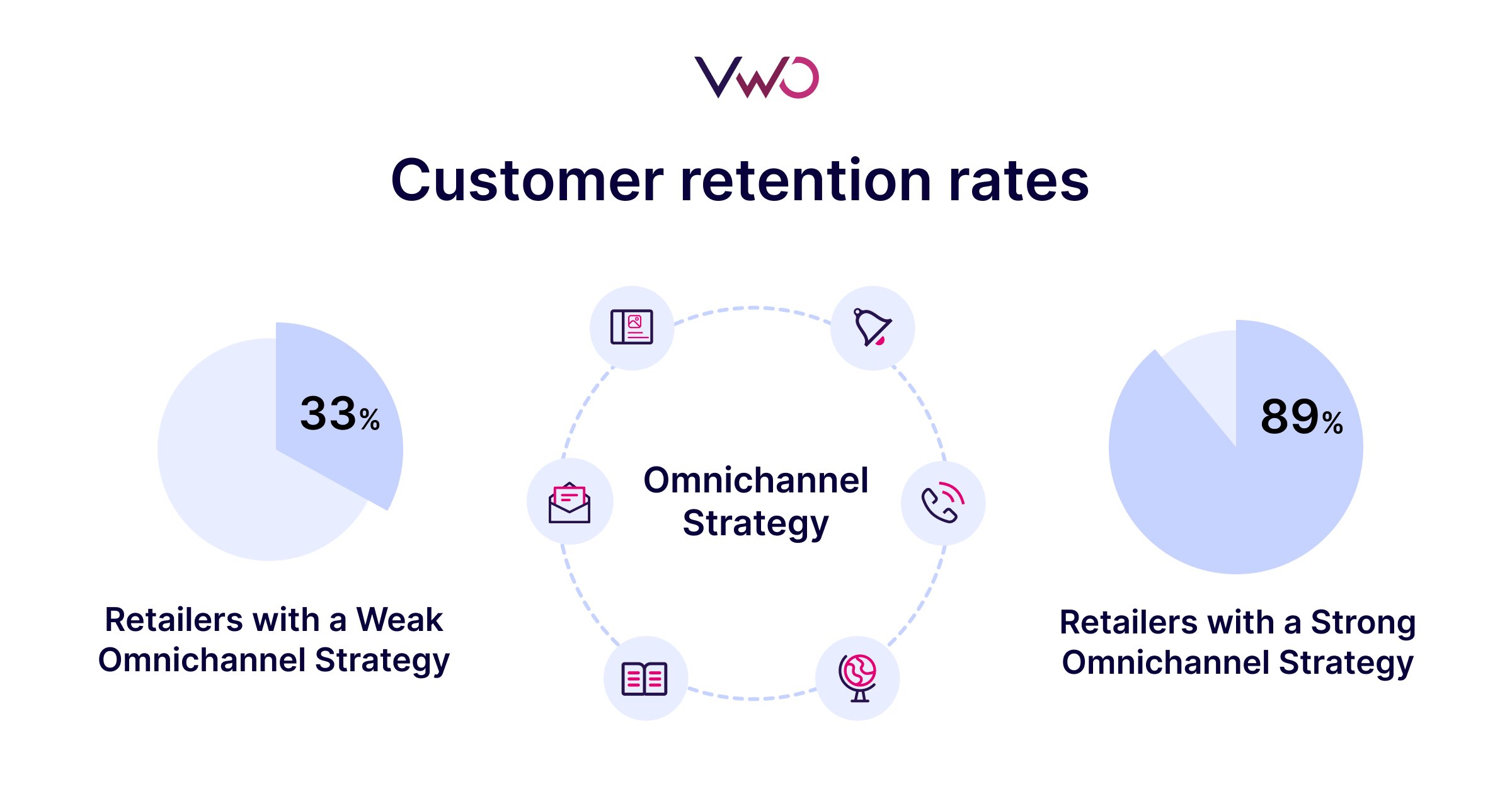
Companies with robust omnichannel strategies create a seamless customer journey across platforms, making customer engagement easier. This highlights the significant impact a cohesive approach can have on retention, allowing businesses to keep more of their customer base than those with inconsistent or fragmented experiences.
Salesforce leads the customer experience management market by offering tools that enhance customer engagement and streamline sales. Its rapid growth and dominance in the CRM space demonstrate how focusing on CX can fuel market expansion.
Statistics for personalized customer experience
Personalized experiences are now a core expectation, with customers gravitating toward brands that cater to their specific needs and preferences. Tailored interactions boost engagement, satisfaction, and impulse purchases, making customers more likely to choose and stay loyal to brands offering personalized solutions.
This trend is especially strong among Gen Z and Millennials, who prefer personalized shopping journeys. Businesses focusing on personalization see higher retention and long-term growth as they build stronger customer connections.
The following statistics support this:
19. Personalized experiences drive impulse buying, with 49% of buyers making on-the-spot purchases after receiving a more tailored interaction.
(Source: SuperOffice)
20. About 80% of people prefer to do business with companies that offer personalized experiences, and 90% find such personalization appealing.
(Source: wisernotify)
21. Online shoppers, including 96% of Gen Zers and 97% of Millennials, are likelier to continue shopping on websites that provide a personalized experience.
(Source: Zendesk)
22. A significant 77% of consumers are more likely to choose, recommend, or pay extra for brands that provide personalized experiences.
(Source: wisernotify)
Consumers are drawn to brands that offer personalized experiences because it makes them feel understood and appreciated. Through tailored recommendations and customized offers, personalization creates a more engaging experience that strengthens customer loyalty. As a result, 77% of consumers are likelier to choose or recommend these brands, and 46% are inclined to make additional purchases. By delivering relevant interactions, brands enhance satisfaction and boost sales and customer retention.
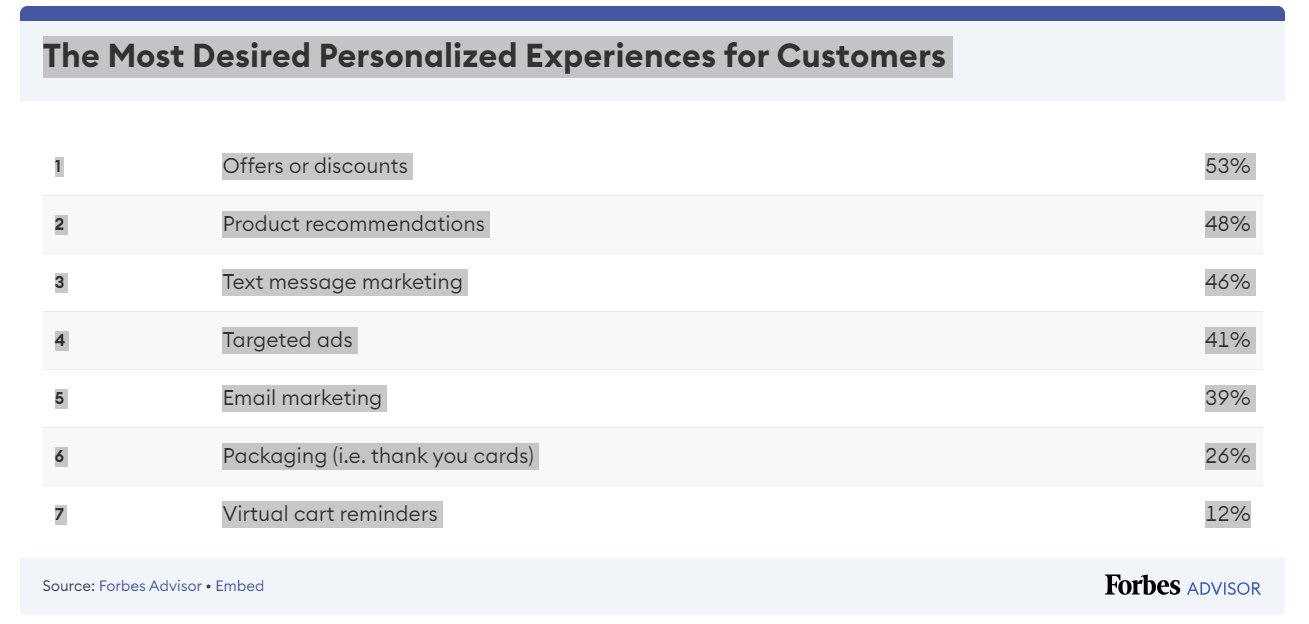
23. Personalized services or recommendations have led 40% of consumers to spend more than they initially planned.
(Source: wisernotify)
Spotify is a leading example of personalization in action. Through algorithms that analyze user behavior, Spotify provides personalized playlists like “Discover Weekly” and “Daily Mixes,” increasing user engagement and satisfaction by tailoring content to individual preferences.
24. 50% of customers are willing to share personal data for a more personalized experience.
(Source: Forbes)
Customers now recognize the value of sharing personal data in exchange for tailored experiences. Businesses create more engaging customer journeys by offering personalized recommendations, content, and offers. This mutually beneficial exchange enhances overall satisfaction, making brand interactions more relevant and convenient, thus incentivizing customers to provide information that fuels further personalization.
Mobile customer experience statistics
Mobile is crucial for delivering customer experiences, with nearly 90% of consumers using their smartphones for impulsive purchases. A well-designed, responsive, fast-loading mobile site is essential, as poor experiences can lead to lost customers and missed opportunities.
25. Nearly 57% of customers are unlikely to recommend a business if it has a poorly designed mobile site.
(Source: Sweor)
A subpar mobile experience erodes brand reputation and customer loyalty. To counter this, businesses should prioritize mobile CX optimization, focusing on streamlined navigation, secure transactions, and personalized content. Regular usability testing helps maintain a smooth experience, fostering positive brand perception and word-of-mouth referrals.
26. Focusing on the mobile customer experience is now a priority for 84% of customer-centric companies.
(Source: SuperOffice)
Customer-centric companies prioritize mobile customer experience as it’s crucial for meeting growing expectations. By ensuring fast, seamless interactions, they enhance satisfaction, reduce friction, and improve retention, giving them a competitive edge in today’s market.
27. Slow website performance leads to poor experiences, and 73% of mobile users report facing this problem.
(Source: wisernotify)
To address slow website performance, businesses should optimize load times by compressing images, reducing unnecessary code, and using content delivery networks (CDNs) to speed up content delivery. Regularly testing site performance and making adjustments will help ensure a smooth and fast user experience, minimizing frustration and preventing customer drop-off.
B2B customer experience statistics
Customer experience is now a significant differentiator in the B2B space. Modern B2B buyers expect the same personalized and seamless interactions found in B2C. Companies prioritizing CX see stronger client relationships, higher retention rates, and significant revenue growth, making CX essential for staying competitive.
(Source: wisernotify)
28. A better customer experience motivates B2B buyers to pay more, with 86% showing a willingness to do so, reflecting trends similar to the B2C space.
B2B buyers, like their B2C counterparts, increasingly value excellent customer experience. IBusiness customers are willing to pay more for superior service and interactions, not just product quality. This trend emphasizes the importance of investing in customer experience for B2B companies, as it can justify higher pricing and boost competitiveness in the market.
29. 72% of B2B customers expect personalization and want their buying experience to mirror the tailored interactions they experience daily in B2C.
This shift in B2B customer expectations reflects the influence of personalized B2C experiences on business buyers. Not satisfied with generic approaches, B2B customers now expect tailored interactions, customized solutions, and relevant content throughout their buying journey.
To stay competitive, B2B companies must invest in data analytics, customer insights, and personalization technologies to deliver individualized experiences. By understanding each client’s unique needs and providing personalized recommendations and communication, businesses can build stronger relationships and meet the evolving expectations of modern B2B buyers.
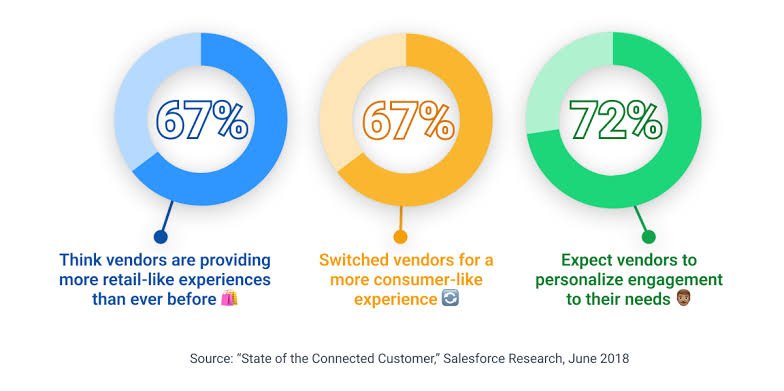
30. B2B companies that achieve high customer satisfaction are 1.5 times more likely to outperform their competitors.
(Source: sprinklr)
For instance, Slack transformed B2B communication with its user-friendly platform that simplifies collaboration. Its focus on customer experience, from quick onboarding to continuous updates and intuitive design, has given it a competitive edge in the B2B market.
Stats for AI in customer experience
AI is transforming customer experience by streamlining interactions and improving service efficiency. From chatbots offering instant support to automated workflows reducing wait times, AI helps businesses resolve issues quickly, leading to higher customer satisfaction and lower operational costs. By automating routine tasks, AI enables human agents to focus on more complex problems, enhancing the customer experience.
(Source: hubspot)
31. Self-service and customer intelligence are emerging as two key investment areas for leveraging AI in customer service.
Self-service and customer intelligence are becoming key investment areas in AI-driven customer service because they address two critical needs: efficiency and personalization. Self-service options, such as AI-powered chatbots – the most popular service channel in 2024 and knowledge bases, offer customers instant solutions, reducing wait times and improving satisfaction. More than half (67%) of customers favor self-service channels over speaking with a representative.
Meanwhile, customer intelligence analyzes these interactions to give businesses insights into customer behavior, allowing for more tailored and proactive support. Investing in these areas will help companies optimize operations, reduce expenses, and offer more tailored, efficient customer service, aligning with the 64% of business leaders who plan to increase their investment in AI technologies.
32. Eighty-six percent of respondents believe AI will significantly transform how businesses deliver customer experience.
AI can automate routine tasks, reduce wait times, and provide instant support through tools like chatbots, creating a smoother and faster customer experience. It can also analyze vast amounts of data to understand customer preferences and behaviors better, allowing businesses to offer more personalized interactions.
AI-driven tools like predictive analytics, machine learning, and natural language processing help businesses anticipate customer needs, offer personalized recommendations, and resolve issues quickly. This level of automation and personalization improves the overall customer journey, making interactions more efficient and tailored to individual preferences.
33. Leaders agree that AI-assisted humans are ideal for resolving complex support requests, with 54% supporting this approach.
Leaders back AI-assisted human support for complex issues because it blends AI’s efficiency with human critical thinking and empathy. AI handles routine tasks and analyzes data, allowing agents to focus on more challenging matters. Chatbots, which reduce query handling time by 77%, free up agents to address complex problems, leading to faster, more personalized resolutions that enhance efficiency and customer satisfaction.
34. AI has led to measurable improvements in 90% of contact centers, enhancing complaint resolution speed and call volume processing.
(Source: sprinklr)
AI has improved contact centers by increasing resolution speed and processing higher call volumes. Chatbots handle routine queries quickly, freeing human agents to focus on complex issues. This efficiency makes chatbot-led interactions 30% more cost-effective than human-led ones. The faster resolutions and lower costs highlight AI’s value in optimizing customer service.
35. The chatbot market is projected to experience significant growth, with a CAGR of over 23% from 2023 to 2032.
(Source: sprinklr)
The chatbot market is projected to multiply, driven by the rising demand for efficient, AI-powered customer support. Chatbots and conversational intelligence tools help improve first-call resolution rates by 25%, allowing issues to be addressed more quickly. Additionally, these technologies reduce customer churn by 10%, as they provide timely and accurate responses. The combined impact of faster problem-solving and reduced churn highlights the importance of AI in transforming customer service and improving retention.
For example, H&M uses AI-powered chatbots to assist customers with product inquiries, size recommendations, and order tracking. This AI-driven customer service helps H&M deliver quick responses, streamline customer interactions, and improve overall satisfaction.
Importance of customer experience
Customer experience (CX) is the total of all customer interactions with a business, from first contact to post-purchase. It includes browsing a website, using a product, contacting customer service, and engaging with the brand on social media.
The quality of every interaction shapes how customers perceive your brand, influencing their loyalty, satisfaction, and likelihood of recommending your company.
Customer experience (CX) is vital for cultivating lasting customer relationships and driving overall business success. A positive CX:
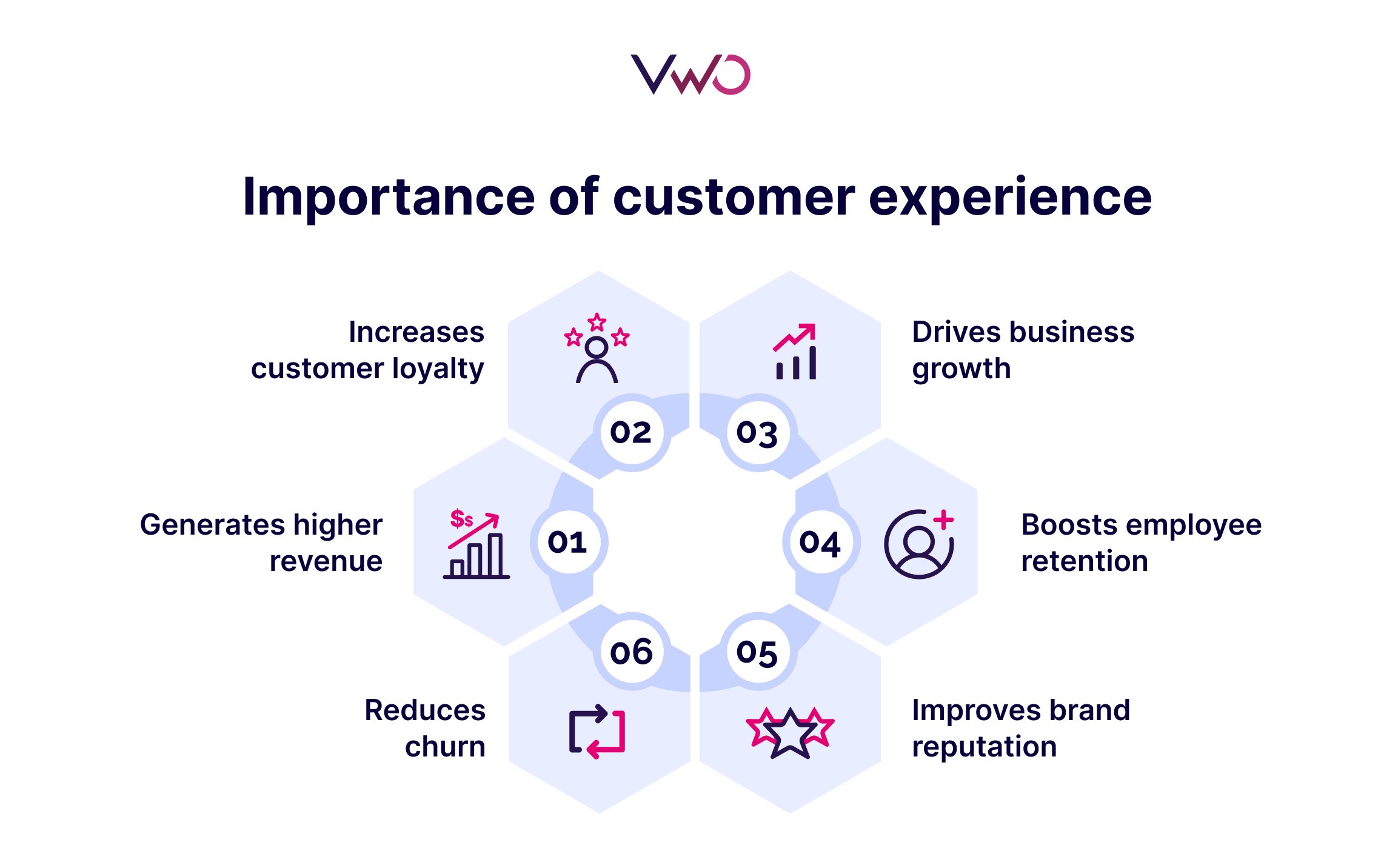
- Increases customer loyalty: A positive experience turns one-time buyers into repeat customers and builds long-term relationships.
- Generates higher revenue: Customers are willing to spend more with businesses that provide exceptional experiences, directly impacting profitability.
- Reduces churn: Great CX keeps customers satisfied, reducing the likelihood of them switching to a competitor.
- Drives business growth: Satisfied customers are more likely to recommend your brand, fueling word-of-mouth referrals and expanding your customer base.
- Boosts employee retention: A customer-centric culture increases employee satisfaction and engagement, leading to higher retention and motivation.
- Improves brand reputation: Delivering consistent, high-quality experiences enhances your brand’s image, helping you stand out in a competitive market.
Strategies to optimize customer experience
Delivering an exceptional customer experience requires a customer-first approach across every facet of your organization. Here are key strategies to optimize the CX to the highest level:
- Understand customer needs: Use heatmaps, session recordings, surveys, and form analytics to gather valuable insights into customer behavior, pain points, and preferences. These insights allow you to tailor practical solutions that meet customer needs.
A comprehensive platform like VWO Insights integrates all these tools, simplifying the process of understanding and optimizing customer experience.
Enhance your understanding of customer feedback with VWO’s AI-powered surveys. Quickly create and analyze on-page surveys to gather valuable insights and optimize the user experience.
- Personalize every interaction: Use customer data to offer personalized recommendations, services, and communications that make customers feel valued and understood.
- Maintain consistency across channels: Providing a seamless and unified experience across all touchpoints—whether online, in-store, or through customer support—is crucial for minimizing friction in the customer journey. In fact, 90% of customers expect consistent interactions across different channels and touchpoints. To meet these expectations, businesses must ensure:
- Unified branding: Keep consistent branding and messaging across all platforms, online and offline.
- Centralized data: Integrate customer data from all touchpoints for personalized, cohesive experiences.
- Omnichannel support: Provide seamless customer support across channels with consistent access to data.
- Standardized design: Align your website, app, and in-store interfaces for a smooth user experience.
- Uniform customer support: Ensure all customer support representatives, whether handling inquiries via phone, email, live chat, or social media, are trained to provide the same high-quality service. This includes consistent knowledge of products, policies, and communication protocols to guarantee a unified customer experience across all support channels.
- Be proactive with support: Anticipate customer needs by offering proactive, timely support through multiple channels, such as chatbots, live chat, or self-service platforms.
- Implement continuous improvement: Regularly collect feedback, track customer satisfaction, and refine your strategy to ensure ongoing customer experience optimization.
- Test and iterate: Use A/B and multivariate testing to continuously refine customer interactions and digital touchpoints. Constant experimentation ensures your customer experience evolves with customer preferences and market trends.
- Adopt a customer-first mindset: Embed a customer-first mindset throughout the organization, with top management leading and supporting efforts to prioritize exceptional customer experiences at every level.
Customer experience improved: Buyakilt.com
Buyakilt.com, an online retailer of Scottish Highland dress, sought to improve customer experience by making it easier for users to find products on their website. They used VWO to test the impact of adding a product filter, which allowed customers to shop by kilt type, pattern, and more.
The results were impressive: a 76.1% increase in revenue, a 26% boost in conversions, and a 19.76% rise in shopping cart visits. By simplifying the shopping process, Buyakilt.com significantly enhanced the customer experience, leading to higher engagement and sales.
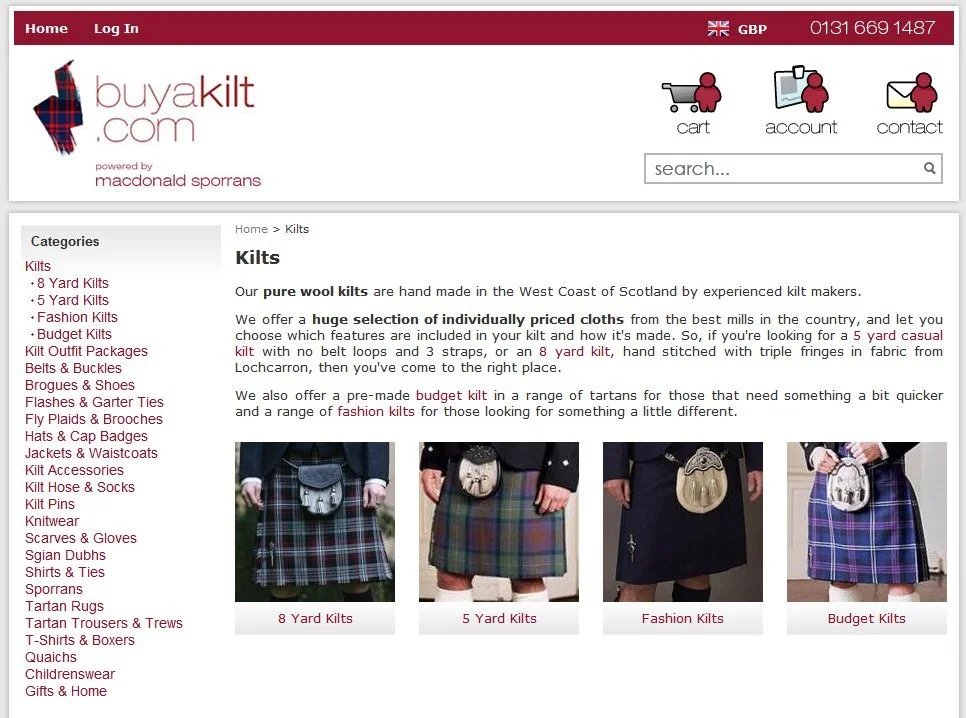
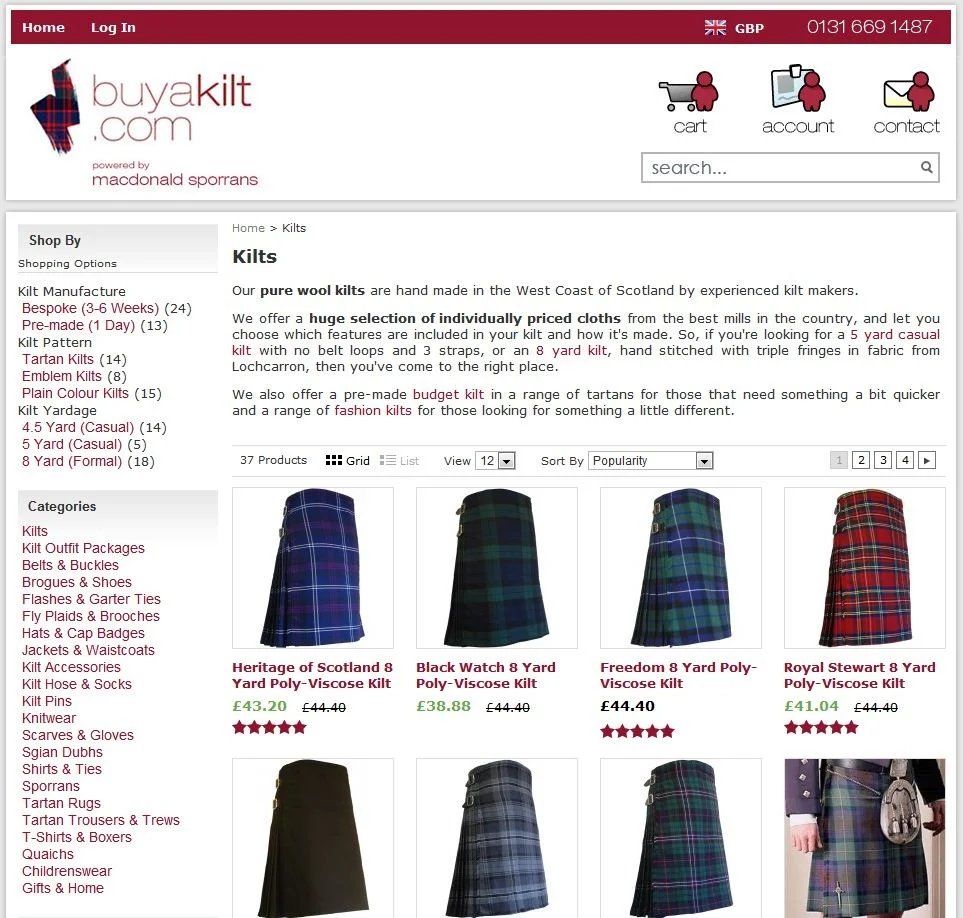
Conclusion
Staying ahead in customer experience means continuously adapting to customer needs and investing in strategies that keep the customer at the heart of every interaction. CX is about meeting and exceeding expectations to create meaningful, long-term customer relationships. Those prioritizing customer experience as a critical business strategy are positioned to lead their industries and differentiate themselves from competitors.
Take your CX strategy further with VWO. Optimize every touchpoint and deliver seamless, personalized experiences. Ready to get started? Schedule a free trial today!



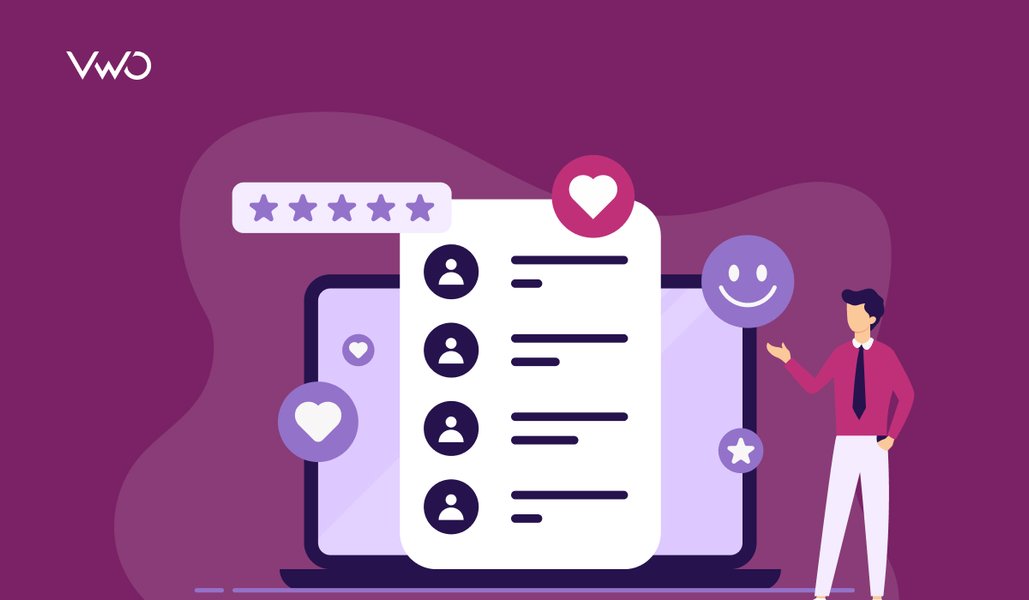
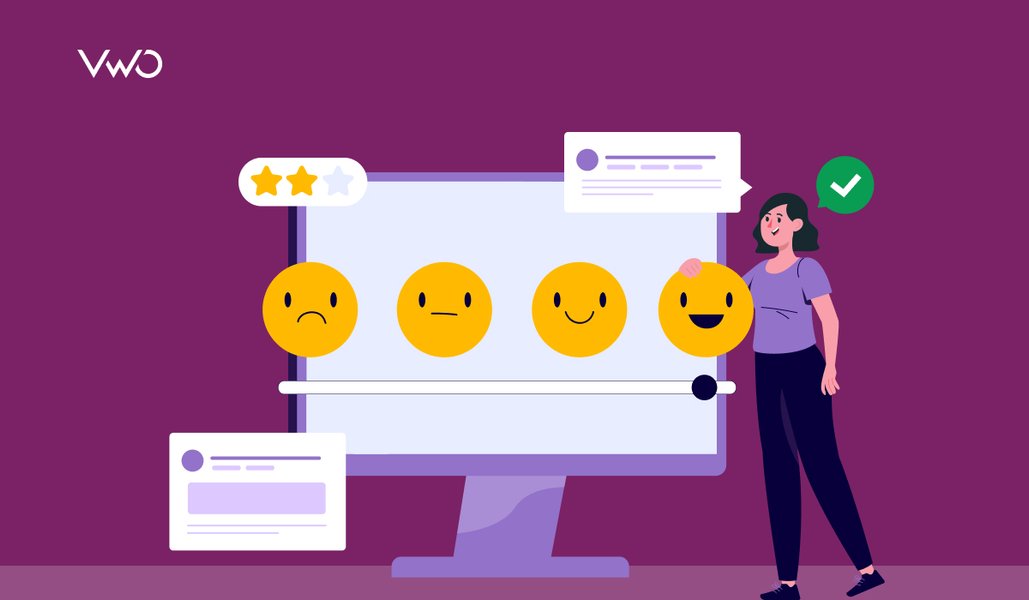

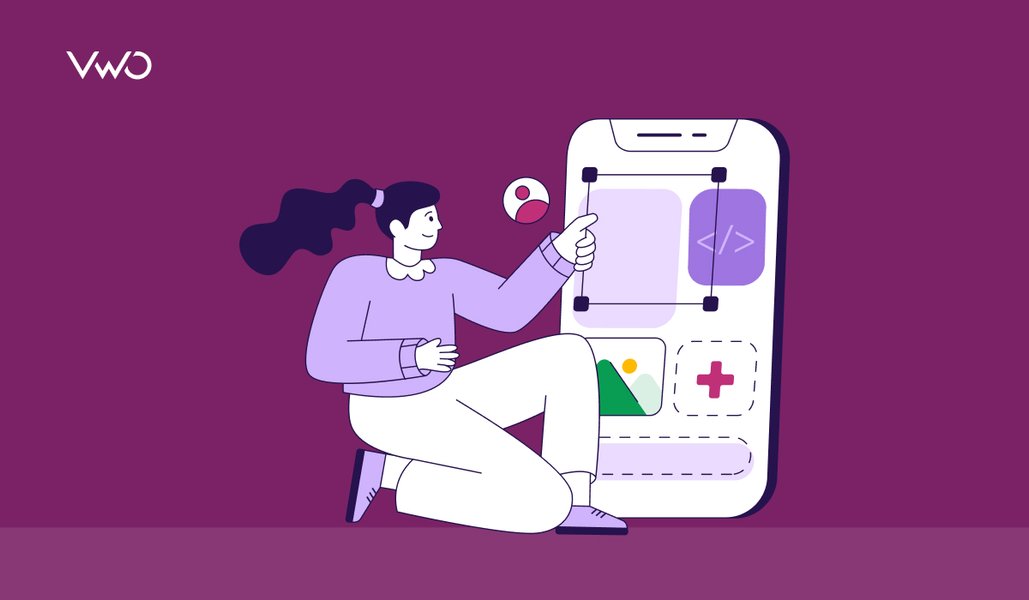


![10 Best Product Management Tools [2026]](https://static.wingify.com/gcp/uploads/sites/3/2025/01/Feature-image-10-Best-Product-Management-Tools-2025.jpg?tr=h-600)
